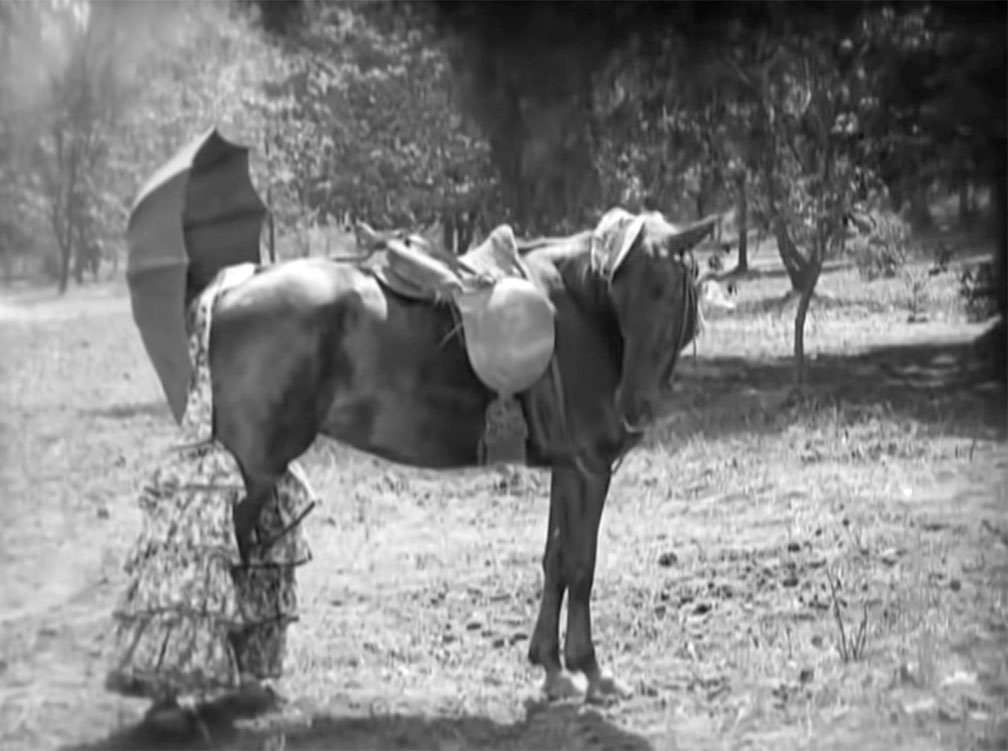Accompanying Keaton’s Our Hospitality this past weekend reminded me of a silent comedy trope I’ve become aware of. It’s one that may have hit my radar because of how it’s handled in the language of silent film, and because of my accompanist’s spidey-sense signaling there’s a laugh here than may need a little help.
It happens twice in Our Hospitality. Usually it’s a one-off, and the fact that Keaton employs it twice is what made it stick in my brain during the show, when my mind doesn’t always retain nuances because I’m creating-performing a film score.
The laugh that needs assistance I’m referring to isn’t one that needs a boost because it isn’t that funny to begin with, or one that needs a little help so it gets the laugh it was put there for. I think audiences of today don’t realize that it is a gag. But the way it’s handled onscreen in terms of basic visual film language signals the fact that something is being shown to us deliberately.
I’m talking about the cutaway shot of a horse that often follows a gag the comedian has just done involving the horse.
The comedian has finished his or her gag, then goes off. We cut to a medium shot of the horse, and hold on it before resuming the film’s action. It’s never done to cover an edit, the usual reason for a cutaway. Not only that, the horse’s head cutaway is held onscreen longer than the usual 1-2 seconds a shot covering an edit would be. On top of that, the shot is held long enough for the horse to look behind at where the comedian was. Sometimes it blinks, too.
This visual language is not a cutaway. It’s the language for a reaction shot.
A reaction shot of the horse.

I’m not actually sure that’s what it it’s supposed to be, because [a] the horse isn’t a main or supporting character and [b] why would you cut to a reaction shot of a horse after it’d been part of a gag, like it was Oliver Hardy. And yet, the more silent comedies I’ve seen, the more I’ve noticed this shot of the horse registering a “what the heck was that?” look. In Our Hospitality, Keaton and his staff do this twice — once with a donkey and once with a horse.
It’s a deliberate technique. The length of screen time is such that it’s a signal for us to expect something more than what a quick cutaway — whose purpose is often a bit of misdirection — is there for. And there’s no reason within the context of the scene or the gag to cut to a shot of the horse.
I don’t know what audience reactions to these horse-reaction shots were in the 1920s, or if there was a commonly understood joke that has evaporated with time. But it’s definitely some kind of joke. I do try to do something musically to help it. Not in a cartoony or sound-effect way, but it’s something along the lines of what I’ve been playing with for years to help the cutaway of Buster blinking in The General.
I’ll be playing for Keaton’s The General on October 9, 2019 at the Luhrs Center at Shippensburg University in PA, and on November 8, 2019 at the Patchogue Theater on Long Island (NY). As of this posting on 10/1/19 both websites have not been updated to include these shows, but believe me…I’m booked there.